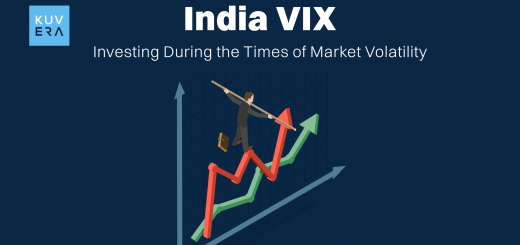Can ROCE help your portfolio race to cross the higher potential returns line? Ever wondered how businesses measure their efficiency in turning investments into profits? That’s where financial ratios come into play. Among these ratios, the Return on Capital Employed or ROCE stands out as a key player. So, ROCE is one of the financial ratios, but what exactly are financial ratios?
Financial ratios are crucial for analysing investments in the business world. They simplify complex financial data into easy-to-understand metrics, helping investors and businesses make informed decisions.
Whether you’re diving into a company’s balance sheet or assessing its profitability, financial ratios are your go-to tools. And when it comes to measuring how well a company is using its capital, ROCE is a ratio you definitely want to understand.
What Is Return on Capital Employed (ROCE)?
The Return on Capital Employed (ROCE) is a financial ratio that measures a company’s profitability and the efficiency with which its capital is employed. In simple terms, ROCE indicates how much profit a company generates for every rupee of capital invested in the business. Think of it as a report card that shows investors how well a company is using their money to generate profits.
When we talk about “capital employed,” we’re looking at the total capital invested in the business, which includes equity, debt, and other long-term liabilities. The goal is to see how well this capital is being put to work to generate profits.
The ROCE Formula and How It Is Calculated
The formula for calculating ROCE is straightforward:
ROCE= Earnings Before Interest and Taxes (EBIT)/Capital Employed×100
Here’s a breakdown:
1. Earnings Before Interest and Taxes (EBIT)
This is the company’s operating profit before deducting interest and taxes. EBIT is often considered a good measure of a company’s profitability since it excludes factors like interest payments and tax rates that may vary widely between companies.
2. Capital Employed
This is the total amount of capital that the company has put to use in its business operations. It is usually calculated as:
Capital Employed= Total Assets−Current Liabilities
Alternatively, it can also be calculated as the sum of shareholders’ equity and long-term liabilities.
Let’s see how this works with an example. Suppose a company reports an EBIT of ₹1 crore and has capital employed of ₹5 crores. The ROCE would be:
ROCE = 1,00,00,000/5,00,00,000×100 = 20%
This means the company generates a 20% return on every rupee of the capital it has employed.
Start investing in Index Funds.
ROCE and Stock Market Analysis: How Is It Used?
In the world of stock market analysis, ROCE is a crucial metric for investors. It helps assess the efficiency of a company in generating profits relative to the capital it has deployed. A higher ROCE indicates that the company is more effective at converting its capital into profits, which can be a positive sign for investors.
Investors often compare a company’s ROCE with its peers in the same industry. This comparison helps determine which company is using its capital more efficiently. For instance, if Company A has a ROCE of 25% and Company B has a ROCE of 15%, Company A is likely using its capital more effectively, making it a more attractive investment.
However, this ratio isn’t just for investors. Companies themselves use it to gauge the effectiveness of their investment strategies. For instance, a business may look at its ROCE to decide whether to reinvest profits into expansion or to pay down debt.
Examples for Different Industries
ROCE can vary significantly between industries, so it’s important to use it contextually.
1. Capital-Intensive Industries
In industries like manufacturing, utilities, and oil and gas, where significant capital investment is required, ROCE is a vital metric. These industries typically have lower ROCEs due to the large amounts of capital employed, but the metric still helps in comparing companies within the sector.
For example, a power generation company with a ROCE of 8% might still be considered efficient if its industry average is 6%.
2. Asset-Light Industries
In contrast, industries like technology or services, where less capital is required, generally have higher ROCEs. This makes ROCE an excellent tool for comparing companies within these sectors.
For example, a software company with a ROCE of 30% would be seen as highly efficient, especially if its peers average around 20%.
Return on Capital Employed might not be as relevant in industries with fluctuating earnings or where capital employed isn’t a major factor in profitability, such as certain service-oriented businesses.
Create wealth with ₹500.
Is comparing ROCE more useful than ROE?
Different companies have different capital structures. Some might be heavily equity-financed, while others might rely more on debt. For instance, one company might have 50% equity and 50% debt, while another might have 80% equity and only 20% debt.
These variations can significantly impact the ROE.
For eg: Suppose two companies, A and B, both generate the same profit. However, Company A has 50% equity and 50% debt, while Company B has 80% equity and 20% debt. Company A could show a higher ROE simply because it uses more debt, which might give the impression that it is more efficient than Company B.
In reality, the higher ROE might just be a result of the leverage (debt), not necessarily better operational efficiency.
Since ROCE takes into account both equity and debt (i.e., total capital employed), it provides a more holistic view of how well a company is utilising all its capital, not just the equity portion. This makes ROCE particularly useful for comparing companies with different capital structures.
Advantages of Using Return on Capital Employed
1. Comprehensive Profitability Measure: ROCE considers both operating profit and capital employed, providing a holistic view of a company’s efficiency in generating returns.
2. Industry Comparison: ROCE allows for an apples-to-apples comparison between companies within the same industry, helping investors identify the most efficient operators.
3. Investment Decisions: Companies can use ROCE to evaluate the potential returns on new investments, ensuring capital is allocated to the most profitable ventures.
4. Long-Term Perspective: Since ROCE incorporates long-term liabilities, it’s useful for assessing the sustainability of a company’s profitability over time.
Already studied stocks and shortlisted? Add stocks and check your stock watchlist with Kuvera.
Limitations of Using Return on Capital Employed
While ROCE is a powerful tool, it’s not without its limitations:
1. Capital Structure Variations: ROCE doesn’t account for differences in capital structure between companies. A company with a high proportion of debt might have a skewed ROCE compared to a company that’s primarily equity-financed.
2. Cyclicality: ROCE can fluctuate with economic cycles, making it less reliable for companies in cyclical industries.
3. Asset Valuation: Companies with old or depreciated assets might show a misleadingly high ROCE. For instance, a manufacturing company with fully depreciated machinery might appear more efficient than it actually is.
4. No Consideration of Inflation: ROCE is based on historical costs and doesn’t account for the impact of inflation on asset values.
Wrapping Up!
Return on Capital Employed (ROCE) is a crucial financial ratio that provides valuable insights into a company’s profitability and capital efficiency. Whether you’re an investor looking to pick the best stock or a business owner evaluating your company’s performance, ROCE offers a clear picture of how well capital is being employed to generate returns.
However, like any financial ratio, it’s important to use ROCE in conjunction with other metrics and consider the context of the industry and the company’s capital structure.
By doing so, you’ll be better equipped to make informed financial decisions that can lead to greater success in the long run.
Interested in how we think about the markets?
Read more: Zen And The Art Of Investing
Watch here: Investing In Passive Funds
Start investing through a platform that brings goal planning and investing to your fingertips. Visit kuvera.in to discover Direct Plans of Mutual Funds and Fixed Deposits and start investing today.
AREVUK Advisory Services Pvt Ltd | SEBI Registration No. INA200005166
DISCLAIMER: Mutual Fund investments are subject to market risks. Read all scheme related documents carefully. Registration granted by SEBI, membership of BASL (in case of IAs) and certification from NISM in no way guarantee performance of the intermediary or provide any assurance of returns to investors. Investments in securities market are subject to market risks. Read all the related documents carefully before investing. The securities quoted are for illustration only and are not recommendatory.












